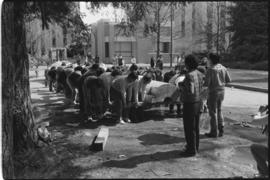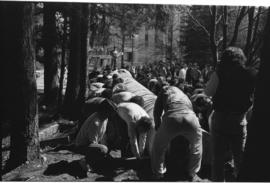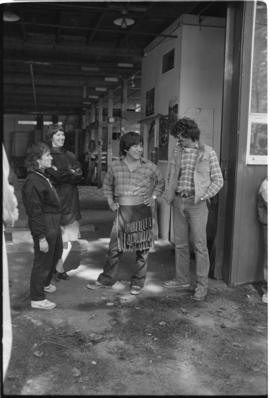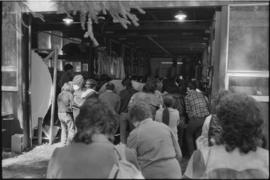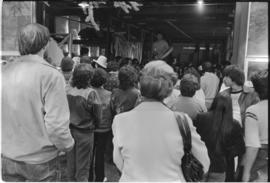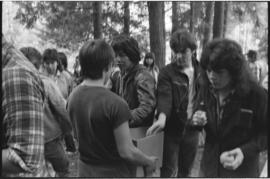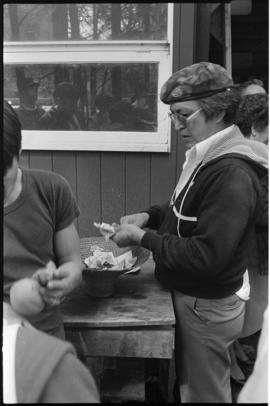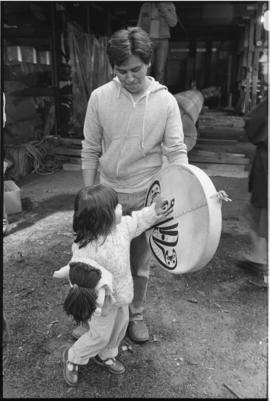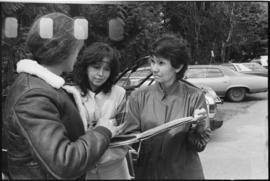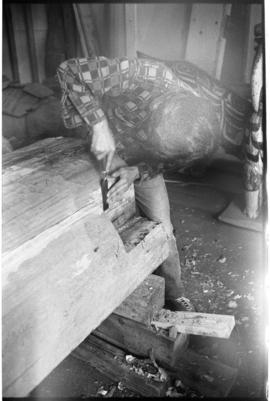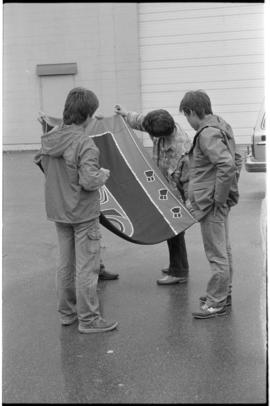- 3-3-09-3-09-A-3-09-A-01-a020743
- Item
- 15 April 1985
Parte de Vickie Jensen and Jay Powell fonds
Item is a b&w negative of a photograph of the crew loading log onto flatbed truck to move it from the Turnbull & Gail construction yard in Richmond (contractors for the Native Ed. Centre) to old UBC carving shed. Info corresponds to text from WHERE THE PEOPLE GATHER or paperback TOTEM POLE CARVING pp. 38-41.
Notes:
Robert Tait (Chip) had told all the guys to ask as many people as possible to come move the log off the truck and into the carving shed. They didn’t have a forklift to do this but Norman also said he wanted as many people as possible to “touch the log”, that he wanted things done as traditionally as possible. All lifts and moves were done to the beat of the drum. The log was heavy and it was also difficult getting it between the small saplings.
Geographic Location: The old UBC Carving Shed

